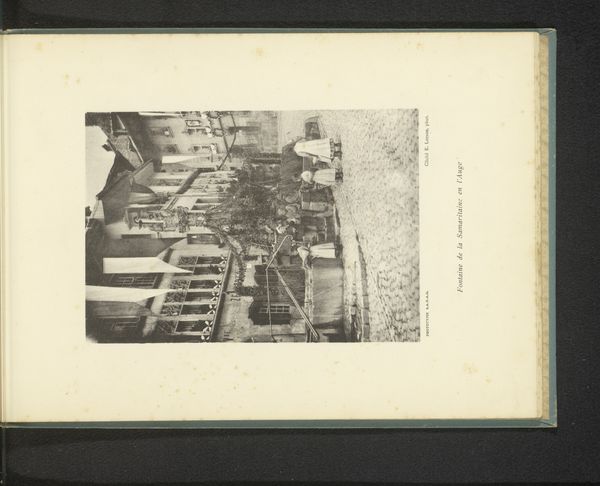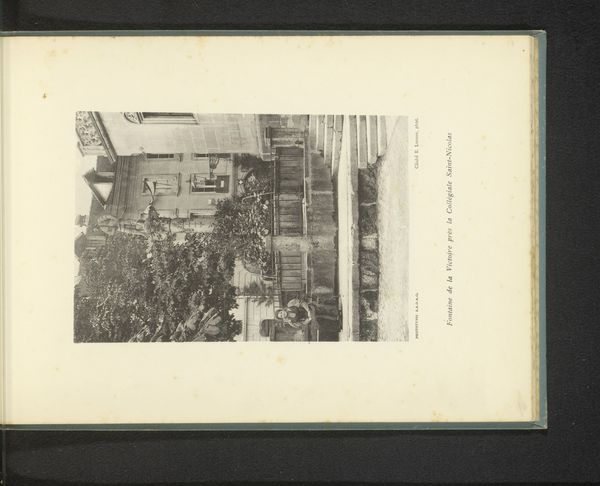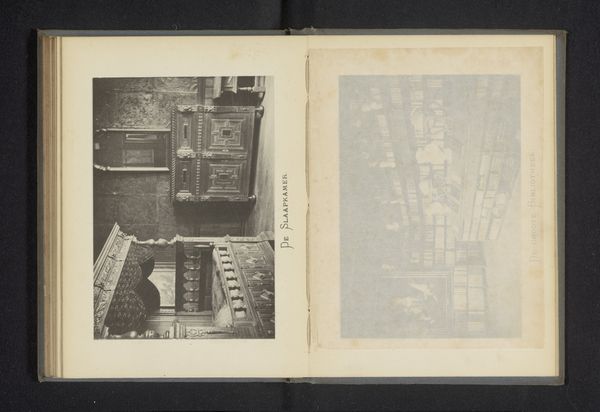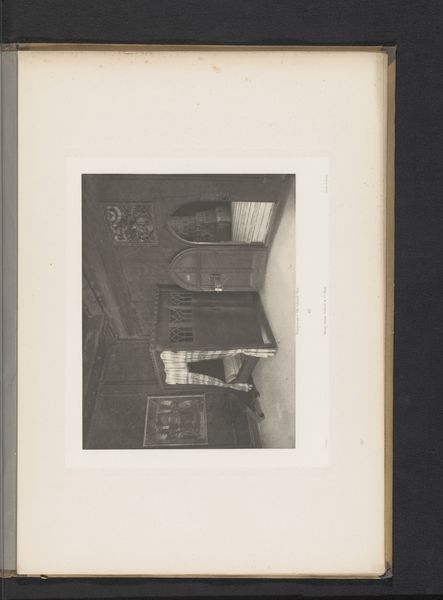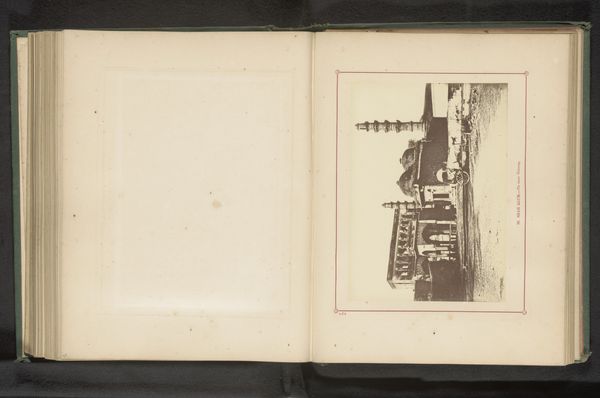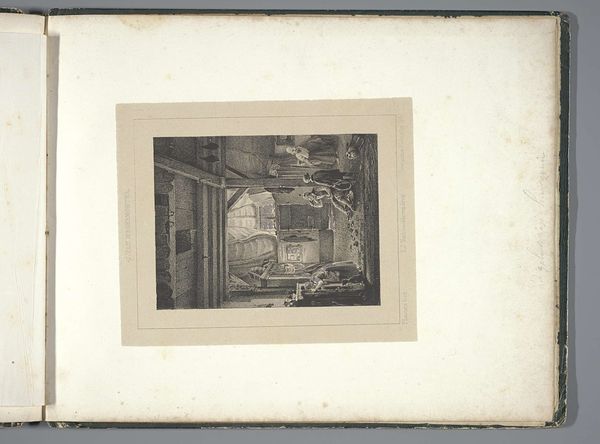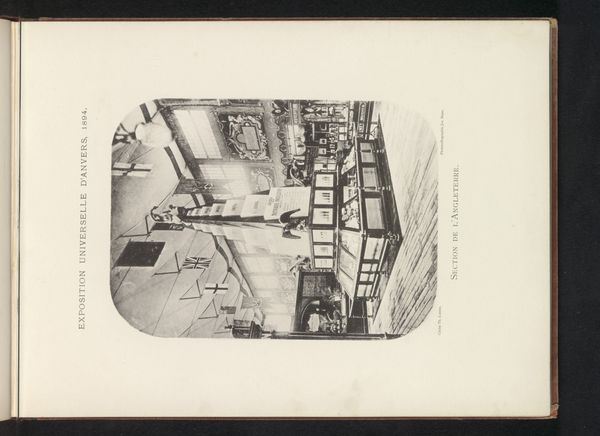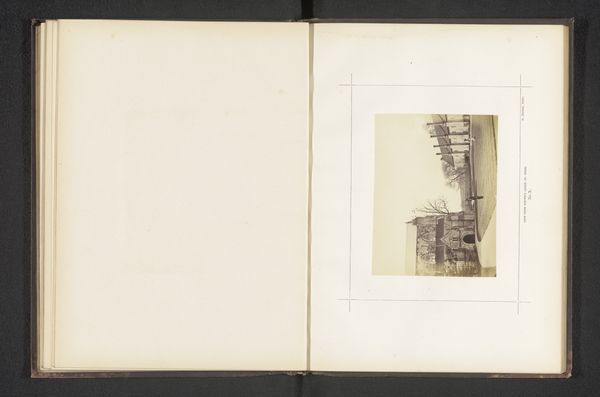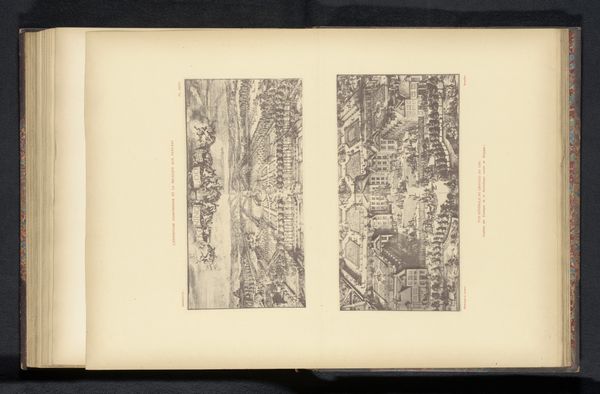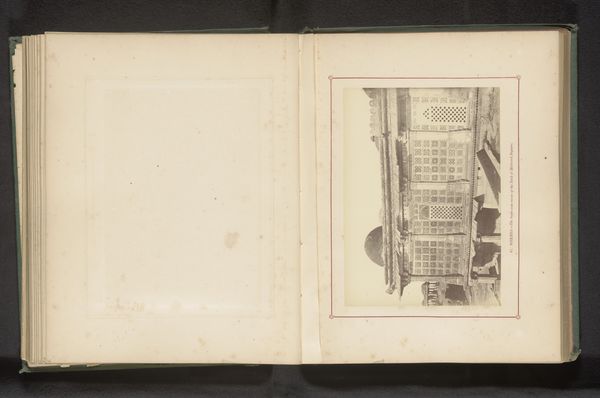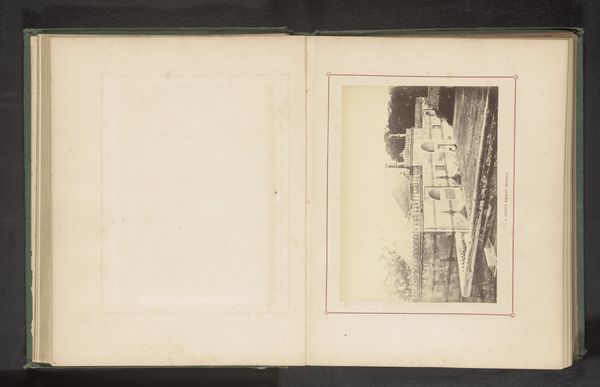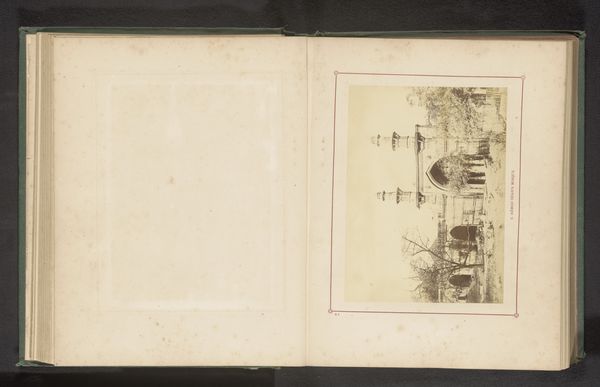
print, photography
photography
cityscape
realism
Dimensions: height 163 mm, width 113 mm
Copyright: Rijks Museum: Open Domain
Curator: I find this photograph so compelling. Shot in 1897 by Ernest Lorson, this print captures the Fontaine de Samson in Place de Notre-Dame in Fribourg. Editor: It has a strangely melancholic quality, don't you think? The stark black and white, combined with the dense architecture looming over the fountain… it almost feels oppressive. Curator: Perhaps it reflects the social stratification of the period, the grand architecture representing the powerful, and the fountain a focal point of community but also subservience. Samson, remember, a figure of strength, is ultimately brought down. The narrative is loaded with complexities of power, betrayal, and liberation struggles—themes so pertinent in fin de siècle Europe. Editor: I see your point, but let's consider the photographic composition itself. The perspective is crucial. The photographer uses the fountain as a central anchoring form, building out and up—there's an intriguing interplay between geometric form of the buildings and the implied fluidity of water. Note the intricate detailing achieved within such a monochromatic palette, really quite skillfully executed! Curator: And the people? These anonymous figures contribute, often unnoticed, to the very structures that, for them, can be a source of oppression. They represent the common folk navigating within rigid societal constructs and hierarchies—their lives are literally framed by those imposing structures. Editor: Interesting indeed. But it could also just be the angle! What else do we see? Let's focus on form rather than the implied. There are patterns, rhythmic windows against what seems to be carefully placed organic detailing on the facade that create some intriguing juxtapositions… Curator: Right, and even that positioning says so much! But to pull back from formalism... the image may simply depict the everyday reality and perhaps reflect how citizens might have perceived and moved around in that particular public space. The photographer, in essence, may well capture it through an aesthetic lens deeply infused with social conscience. Editor: Perhaps. Regardless, this is a striking photograph to parse. I do find it difficult to move away from the composition of tones which bring life to what would otherwise have been a lifeless setting. Curator: I find that I keep being drawn back to the layers of social, political, and economic life imbued in its seemingly simple realism. I like the image as an active space reflecting society as a whole.
Comments
No comments
Be the first to comment and join the conversation on the ultimate creative platform.
